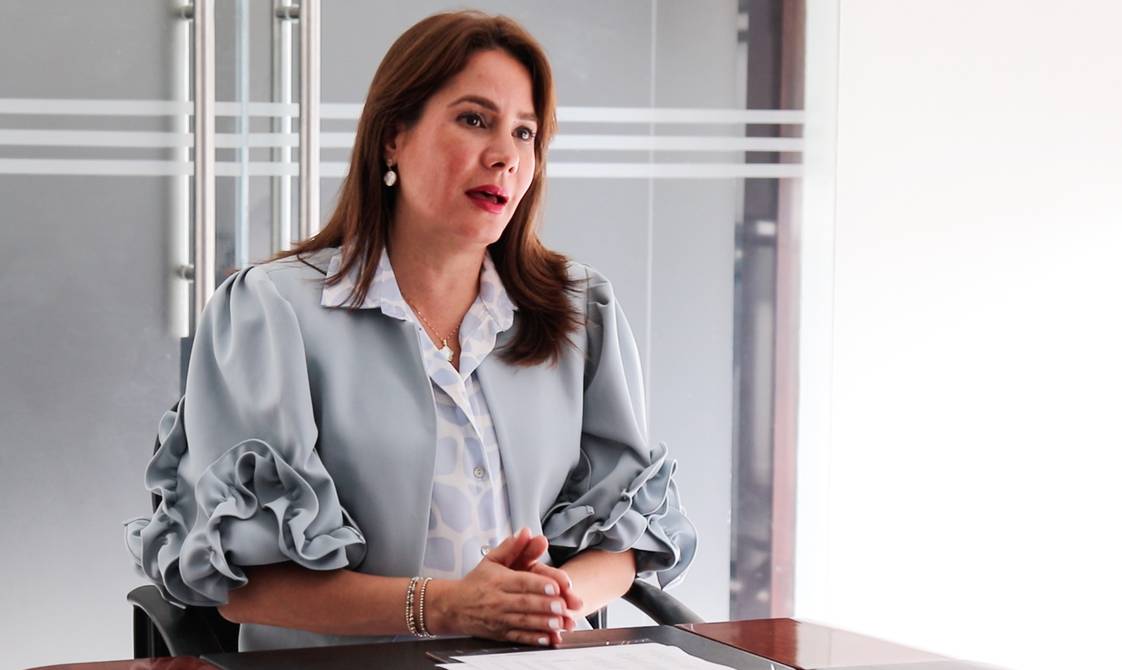Ecuador has a population coverage of the mobile service in 2G / 3G of 97.11% and of 4G of 60.74%. Mobile internet access is 54.4%; while from homes it is 53.2%. And increasing coverage is one of the goals of the Minister of Telecommunications, Vianna Maino, who mentions that by the end of 2021 she hopes to install 4,817 Wi-Fi points, as part of the 100% digital Plan.

Minister Vianna Maino has served as an advisor to the infrastructure, technology, public services and transportation sectors; and as a specialist in Ecuador for IDB and World Bank publications.
What are the lines of action of the State portfolio to fulfill the task of 100% digital Ecuador?
Our work plan is made up of three fundamental axes for the digital transformation of the country: connectivity (internet and cellular coverage for all of Ecuador), digital government with quality public services and digital transformation (prioritizing telemedicine and tele-education).
What actions have been taken a little over a month after the first 100 days?
We have already started the process of expanding connectivity in the country, working together with telecommunications companies to reduce the digital and social divide. Upon our arrival at the Government, 260 parishes lacked mobile connectivity. In just 21 days of management, we provided connectivity to 14 parishes, such as Nueva Loja, Pungalá, Dayuma, among others, which today already have 3G and 4G technology. In addition, the service has been improved and optimized in 40 towns, thus adding 54 connected towns in total, benefiting about 155,000 citizens. In the first 100 days of government, 33 more new parishes will access telecommunications services. We will install 886 free Wi-Fi points, of which we have already placed 25 in rural areas. We expect to have a total of 4,817 Wi-Fi points installed by the end of 2021.
How much is the budget needed to have a 100% digital country?
Having a 100% connected Ecuador is a joint effort between the State and private companies that will invest in improving their infrastructure. The investment required in terms of infrastructure is approximately $ 683 million, which will allow us to provide mobile coverage and connectivity for internet access. Added to this is the nearly $ 77 million required to upgrade mobile connectivity from 2G to 4G or higher.
In what way is it being analyzed that access is for all, perhaps there are studies, which are the first sectors intervened?
The Ministry of Telecommunications constantly updates information, coverage indicators and connection needs throughout the country. At the moment we have the connectivity databases and the expansion plans of the mobile operators, which allows us to identify the populations and prioritize them.
You mentioned telemedicine and tele-education, how is the ministry going to act?
By providing connectivity to the entire population, telemedicine and tele-health education are made viable, allowing more people to access these services. In addition, Info-centers will be involved to strengthen telemedicine and tele-education for users in rural and marginal urban areas of the country. Therefore, more connectivity will allow progress in greater health and education.
Another challenge is to digitize the procedures until 2025. How will it be done and what will be the investment?
The Ministry of Telecommunications makes available to public sector entities a tool to digitize procedures, which has integrated validations with the Civil Registry, SRI, among others, as well as the use of electronic signature. Likewise, gob.ec continues to incorporate technological enablers such as the payment gateway and the implementation of express certificates, which will allow a greater number of procedures to be digitized.
Although it is true that there is talk of a great digital process, how is it going to be guaranteed that said information on procedures is not violated?
Through the issuance of the cybersecurity policy and the government information security scheme, it is sought that public sector entities establish measures that ensure the confidentiality, integrity, and availability of information.
5G technology was one of the unfulfilled promises of the previous government and that was pending. What will you do on this issue, is there progress?
For the adoption of 5G technology, it is necessary to start by strengthening the country’s connectivity capacity and the ecosystem of technologies. This state portfolio maintains close ties with all public and private operators in order to attract investment.
At the time, both private and public operators conducted pilot tests of 5G technology on their networks.
Are there ways to lower the cost of the internet? Ecuador is above Peru, Brazil and others in the average value of the gigabyte. It has a cost of $ 6.93.
Costs can go down as long as investment is attracted to improve services, expand connectivity. Our commitment is this, the great objective of benefiting the end user, who will obtain quality service and lower costs. We are currently working on updating the costs, since the value of $ 6.93 corresponds to a study carried out in 2019.
In 2023 the concessions of the private cell phone operators in the country will end. How to ensure a renegotiation that generates revenues for the State?
This renegotiation process aims to improve conditions, prioritizing a social issue. The main thing is to reach every corner of the country with connectivity, to connect schools and health centers.
Meanwhile, how is the frequency assignment process going to be?
The process will be carried out in accordance with the regulations and current law. In the case of telecommunications, through the Organic Law of Telecommunications, which establishes the procedure for assigning frequencies for the provision of telecommunications services; and in the case of frequencies for radio and television, the legal framework is the Organic Law of Communication, which states that for the assignment of frequencies for private and community media, a public frequency contest must be carried out, these processes will be carried out in a transparent and orderly manner. The current duration is 20 years. (I)





